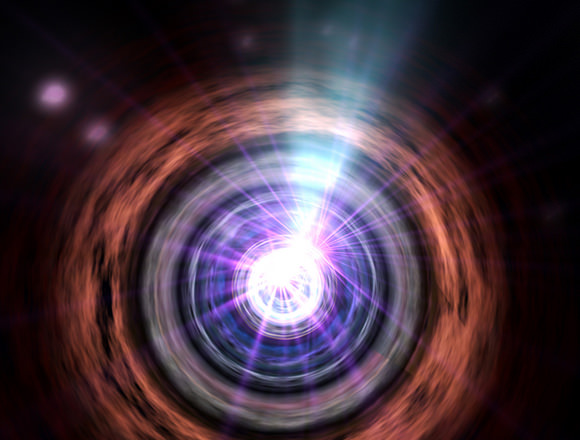[/caption]
One of the most interesting constants and challenges in physics is the speed of light. The speed of light has a lot of important implications for physics from General Relativity to the search for a unified theory. Physicists and aeronautics engineers designing future space craft see it as the last great barrier to practical interstellar travel. So how fast does light travel?
We know that light has a finite speed and it travels at the speed of 300,000 kilometers per second. This a great distance to travel. On earth this speed is almost instantaneous. However we now know that its limits can be determined on the larger scale of space. For example it takes about 8.3 minutes for light from the Sun to reach the Earth. To reach the nearest star to the Solar System it takes about 3 to 4 years. This limitation of light is what we call the light speed barrier.
In the early days of science the argument of whether the speed of light was instantaneous or not was a major source of debate. As early as the Greeks, there were proponents that argued for both a finite and infinite speed for light. There were also writings during the 11th century by Arab philosophers that proposed that the speed of light depended on the medium it traveled through. It would not be until the 20th century that physicists such as Planck and Einstein would discover the actual speed of light and light’s properties.
As mentioned earlier the speed of light does change. It is actually only 300,000 km in a vacuum. The speed varies slightly in air and other mediums depending on transparency and refractive quality. The speed of light however tends to still be considerably faster than that of others waves such as sound waves. It was also discovered that the speed of light applies to all forms of electromagnetic radiation not just visible light. Physicists are also proposing that the speed of light also applies to gravity waves.
Understanding of the speed of light has led to some interesting theories in physics. Many of them can be found in Einstein’s theories of General Relativity and Special relativity. First off, only massless particles such as photons can naturally reach the speed of light otherwise it would take essentially infinite energy to reach this speed. However objects with mass can theoretically achieve a significant percentage of light speed. It is also proposed that even if light speed could be reach it would produce certain side effects. One is time dilation where while traveling at light speed a Rip Van Winkle effect occurs where years would pass by for observers while a person traveling at light speed would only experience moments of time in the same perceived period. It has also been theorized exceed light speed would lead to time travel.
We have written many articles about light for Universe Today. Here’s an article about gravity moving at the speed of light, and here’s an article about galaxies moving faster than the speed of light.
If you’d like more info on the speed of light, check out The Speed of Light According to Einstein, and here’s a link to The Speed of Light on a Rocket by NASA.
We’ve also recorded a Question Show about the Speed of Light. Check it out!
Sources:
Wikipedia: Speed of Light
Wikipedia: Time Travel
Newton Ask a Scientist!
University of Illinois

